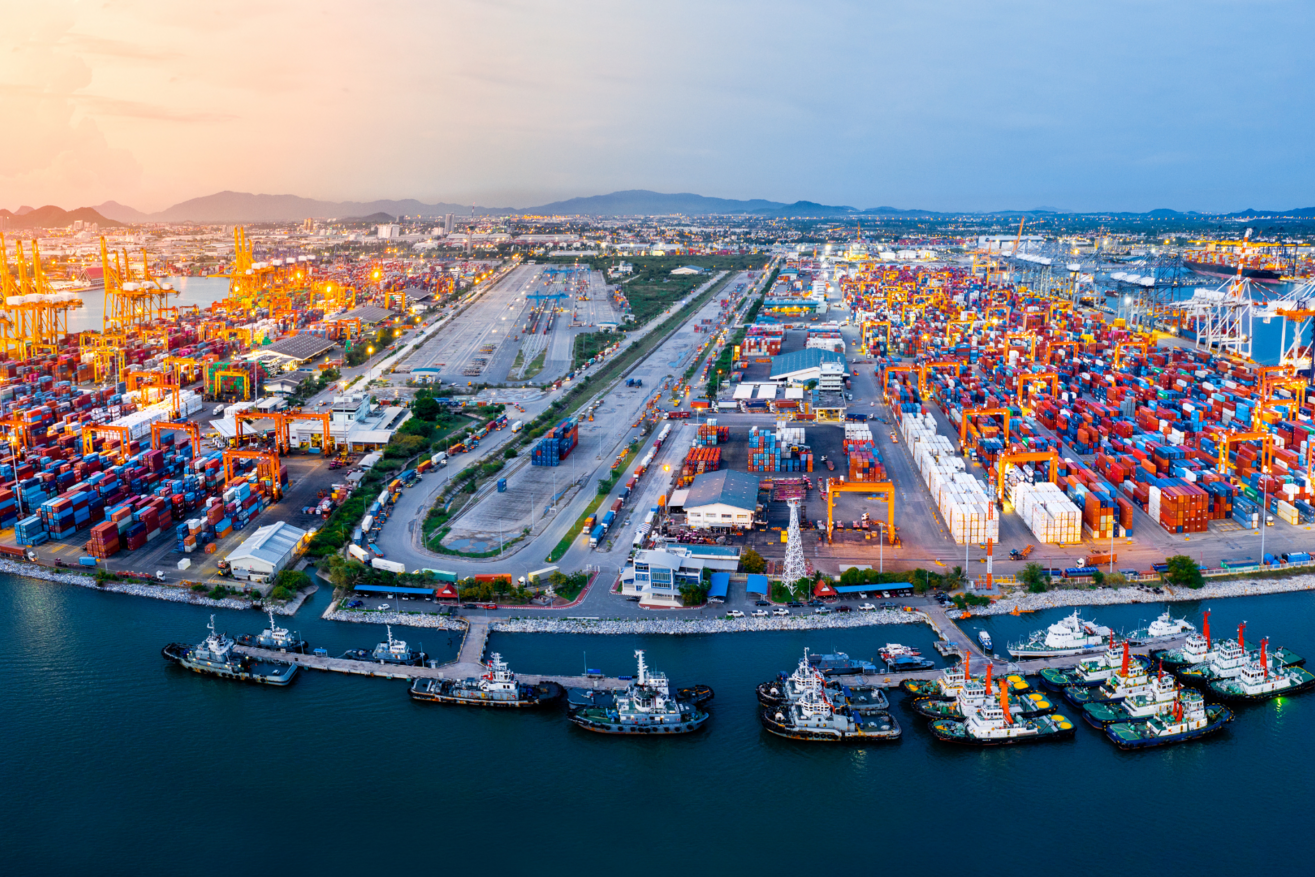Supply chain value creation under private equity ownership

How can PE owners create value from supply chain data in their portfolio companies? Ross Gordon, head of Odgers Interim’s EMEA Private Equity Practice, gains insight from a leading expert in the field.
Traditionally, private equity (PE) and the supply chain have been somewhat at odds with each other. This is due to what we could call a timeframe imbalance.
PE typically aims to secure an exit within 3-5 years. Supply chains in general, but most certainly efficient supply chains from the highly stable and predictable phases of our recent history, tended to operate on longer timespans.
As such, PE firms seldom focus on big supply chain infrastructure overhauls because they generally require heavy capital investment. Payback for such major investment might take longer than five years, putting it out of step with exit strategy goals. Instead, PE owners need to perform a balancing act, deciding how much and where to invest in the supply chain to get the best returns.
Getting this right is more important than ever against a PE-unfriendly backdrop of high interest rates and high inflation. Undoubtedly, supply chain has come increasingly to the fore in recent years due to the rise of new technologies, the shock of the pandemic and the impact of various macro-economic factors such as the war in Ukraine. By pulling the right levers, supply chain directors can protect a business and create value.
“We saw through the pandemic that supply chain has become one of the single most important business disciplines in most companies,” says Raul Portela da Cunha. “Everybody's realised that without a functioning supply chain, pretty much everything else doesn't really hold up. If you can't get the products to the shelf or to your customers, nothing else really matters.”
Raul certainly knows what he is talking about. A former Chief Operating Partner for the PE-owned Helly Hansen outdoor clothing brand, he has worked in distribution and supply chain roles for the likes of Kingfisher, Triumph International, Burberry and Maersk. He also has supply chain consultancy experience under his belt, including with Capgemini. Most recently, he spent three years as Operating Partner at Alteri Investors, a specialist private equity investment firm focused exclusively on the European retail sector, where he was responsible for supporting investments from early due diligence to post transaction integration as well as managing a portfolio of companies and delivering value creation, change and organisational and strategic transformation.
Raul notes that as technology has moved on via a migration to cloud computing, the growing use of Software as a Service (SaaS) has generated new opportunities. Greater flexibility and agility are achievable as changes in system functionality can be deployed almost instantaneously.
Driving value hinges on data, which Raul warns should not be seen as a “panacea”. All the more so in the PE space with its short- to medium-term investment horizons. “Once you understand how to manage data and how to leverage data, the playbook is pretty simple,” says Raul. “It's something you can do easily with very little investment due, and a lot of private equities are doing this now because it fits into their shorter time cycle as it is low capex. And it's very easy to target specific pools of opportunity.”
Raul cites an example of this approach from his time in private equity. The development of an integrated data model from a portfolio company in the bedroom furniture market proved revelatory, “providing a completely different and unbiased view of what was truly happening.” Insights derived from the data helped shape specific action plans that improved performance and profitability.
Companies are looking for increased visibility – keeping track of real time data indicators to make supply chain decisions. The pandemic brought with it the bruising lesson that it’s all but impossible to predict the future. In response, businesses are starting to develop data ecosystems that combine real-time internal data with external information from reputable sources to better understand and pursue trends and opportunities. By way of example, Raul points to a Swiss auto parts company that was recently able to identify the opportunity to “remove an enormous amount of inventory” held in its supply chain by unveiling insightful correlations, including the discovery of a huge spike in demand for car parts ahead of key holiday cycles in mainland Europe (because many consumers were buying car parts before going on holiday in their vehicles).
“Whilst integrated, connected and reliable data are key enablers of any supply chain, leadership and the ability to interpret the data to identify value pools, make decisions and formulate strategy remain key attributes for supply chain and procurement leaders,” says Lucy Harding, Partner and Global Head of Procurement and Supply Chain Practice at Odgers Berndtson. “The pace of decision making and exposure to board discussions and subsequent action in PE portfolio companies remains an attractive environment for supply chain and leadership.”
There are several major supply trends at play in which data plays a critical role. First, the rise of ESG. To match top-down strategic targets set at the corporate level, companies must find ways to report on their progress. To deliver that, accurate, meaningful supply chain data is a necessity. After all, supply chains are responsible for anything between 65 and 95% of carbon emissions. Of equal importance, and in a bid to minimise geo-political risk and boost supply chain resilience, many firms continue to pursue nearshoring activities.
“You see a lot of people either moving away from China, or as I would put it, trying to run synchronised supply chains,” says Raul. “What I mean by this is, you might continue sourcing from China, because you might even be supplying to China, for example if you're a fashion retailer selling there. But by also sourcing closer to your markets in Europe and North America you reduce supply chain lead-times, variability and risk.”
The week-long blockage of the Suez Canal in 2021 by the container ship Ever Given focused a lot of minds in this respect and added impetus to a move towards dual sourcing strategies. But the difference in labour costs between Europe and Asia must be taken into consideration. Higher wages in Europe make investments in automation here a more attractive proposition, and with this comes the possibility of greater integration of sensors and AI to optimise performance and generate ever more useful data. Sourcing closer to home also reduces lead times, enabling a faster response to opportunities.
Finally, and if any further proof were required, over the past few years there has been a surge in PE investment into supply chain technology and solutions businesses. Tech holds many of the answers to the growing complexity of supply chains driven by globalisation, e-commerce, ESG requirements and the potential impact of geopolitical events or natural disasters. The PE market always has a nose (and now also compelling data) for an exciting investment proposition.
PE firms are utilising the skills of supply chain interim experts for their portfolio companies to drive value creation and recognise that interim executives available at short notice for distinct projects offer massive advantages. If you would like to have an exploratory conversation about how interim supply chain executives can support you, please get in touch.






